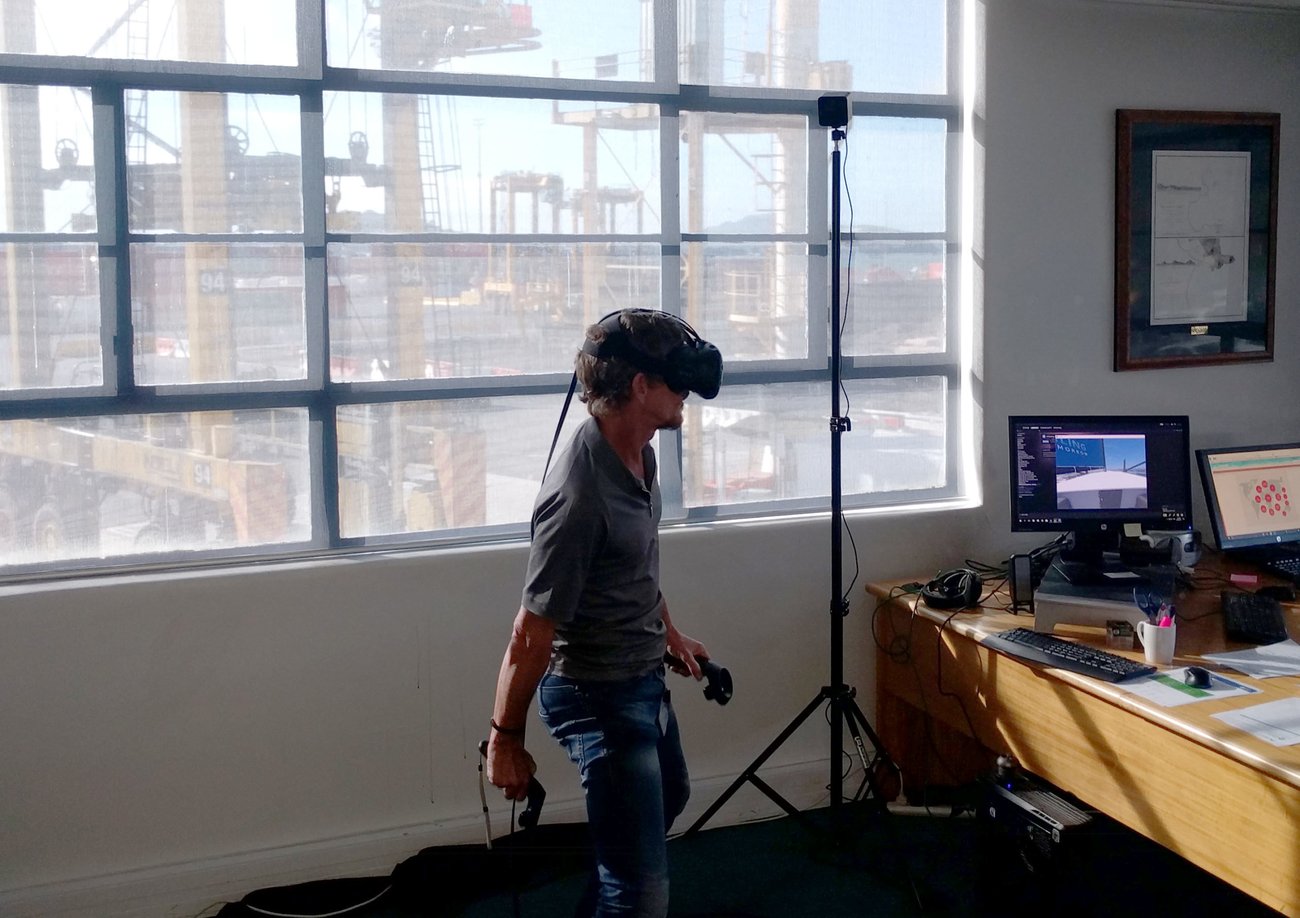
Likewise, the idea of using a VR “simulation” to train for real-life isn’t new, either – after all, airline pilots have been training in simulators before receiving their wings for decades.
But using VR for training for the real world goes much further than that. We take a look at some of the things being done right here in Aotearoa.
Construction
A finalist at the 2017 New Zealand Innovation Awards, Fulton Hogan’s VR training for its “Boil Out” procedure is the first time VR has been used in New Zealand’s construction industry.
The “Boil Out” procedure involves decontaminating bitumen sprayers and tankers if water has been present. The unintended mixing of water and bitumen is a common cause of accidents associated with the use of hot bitumen. If a serious boil over is not handled properly, bitumen can be sprayed with considerable force over a wide area – which can cause serious harm or even death.
Using the VR Boil Out app, which was developed together with Corvecto, Fulton Hogan’s VR training gives employees the ability to virtually perform the Boil Out procedure step-by-step, and experience the harmful consequences of any mistakes made – all while in a safe environment.
Fulton Hogan innovation manager Chloe Smith says: “You actually feel like you are standing on top of the tank, looking down from a height. Along with this the sound effects are so realistic you really do feel like you are physically present in the scenario.”
When mistakes are made, employees are virtually transported to a room where a screen outlines the errors they made and the steps they should have taken. They are then able to repeat the task and improve their performance.

Boating
Maritime boat pilots people guide ships safely into harbours all around the world. As part of their job, they have to get on and off moving cargo ships by means of a rope ladder – a demanding and risky job.
Christchurch apps design company LWA Solutions knows this, too – which is why they’re launching a world-first virtual reality pilot training app with the Ports of Auckland early next year.
The LWA app uses virtual reality to safely simulate the experience maritime pilots go through when getting on and off ships.
LWA chief executive Atta Elayyan showcased the virtual reality training solution at the recent New Zealand Maritime Pilot Association’s 30th anniversary annual conference in Christchurch. “It’s a highly cost-effective training method, safely simulating highly variable conditions making it superior to current training methods,” Elayyan says.
“We believe virtual reality training will become an industry standard in the very near future. It provides a risk-free way to prepare trainee pilots for the tasks they will need to undertake during their job and can also efficiently vet out those who may not be cut out for the role.
“We understand there are no solutions like this anywhere in the world using virtual reality headsets. Our simulation is targeting the ‘embarkation training’, which is the physical process of safely manoeuvring outside the pilot boat and climbing a nine metre ladder to board the ship, while both the pilot boat and ship are under way.
“Some ports overseas use ship bridge simulators, which are very costly to set up or hire. We are using a highly cost-effective virtual reality training system which requires minimal physical space and is portable. We can see this disrupting bridge simulation in future.”
LWA Solutions has also produced a special app for the Ports of Auckland which is helping to improve piloting of ships into the harbour. Their app is the first fully digital piloting application of its kind in Australasia. It has increased the efficiency and reduced potential human error by consolidating multiple processes into a single app highlighting ship schedules, tidal calculations and manouvre drawings. The Ports of Auckland has about 1,500 shipping arrivals a year.
Ports of Auckland Senior Pilot John Barker says they are always looking for ways to do more with less. “We use a crane and straddle simulator to train our crane and straddle drivers, a move which has improved our efficiency and saved $3 million dollars in training costs,” says Barker. “Our pilot app, developed with LWA Solutions, has made the master-pilot transfer safer and more efficient. Now we are introducing the virtual reality pilot training app, which aims to enhance safety by improving training for one of the most-risky manoeuvres in port operations. It is another step in our journey to becoming a world-class sustainable port.”

John Barker left, with LWA CEO Atta Elayyan.
Crime scenes
Auckland-based Staples VR has teamed up with the Institute of Environmental Science and Research (ESR) to create a VR tool to let investigators “step into” a crime scene, without actually being there. Used to train investigators, the tool teaches investigators what to look for, and also how not to contaminate a scene or ruin evidence.
Based in the HTC Vive, it uses the process of Photogrammetry, LiDar scanning and interactivity to create an experience where detectives are to demonstrate to evaluators the correct way of logging evidence and collecting crime scene data. The system uses actual crime scene logging training adapted into a virtual simulator using a custom user interface – meaning it’s as close to the real thing as possible. Sherlock Holmes, eat your (virtual) heart out.




